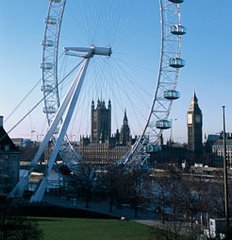
Kane, 9 June 2007, Barfly
It's been a while since I last went to Barfly. In fact when I was last there it was The Monarch and Barfly occupied the top floor. This first-floor room is still where gigs take place and it hasn't changed much over the years. Painted black, dimly lit, a stage at the front, a small bar at the back and little else in between. It's the ideal place for an up-close-and-personal gig.
On the night of the Kane gig this empty space was filled with assorted fans - despite this being the band's second night (the first date sold out within hours, I know because I tried to buy my tickets at around lunch time and there were none left). Not bad for an unsigned, little-known country band from the US of A.
But of course Kane do have one big advantage going for them - the singer is one Christian Kane, famed for played evil lawyer-with-a-heart Lindsey McDonald in Angel. I'm sure many of the band's fans started off as fans of the show, but while they might come for Linsdsey, they stay for the music.
It was an all-acoustic night and first on was singer/songwriter Niall Quinn. Niall's particular brand of country influenced folk was reminiscent of Ryan Adams, and his tender voice is the perfect foil for his lyrically charged songs. For a selection of songs Niall is joined on stage by Katie Harnett, a singer whose voice sounds like it made its way here by way of Nashville.
Second up was David Arthur Jnr, another folksy singer/songwriter, this time with tinges of the Libertines. And this is where David fell down. He's got a great voice and the songs work, but the Pete Doherty shtick doesn't. When David lets his own personality get the better of him, things definitely improve.
And then there was Kane. Duo Steve Carlson and Christian Kane have got themselves a fiercly loyal following on this side of the pond. There were fans there who had been to every show of this short but wide-ranging UK tour. So, yes, Kane were playing to the converted, everyone wanted them to do well. And do well they did, despite some unexpected problems. A few songs in and, just as Steve was building up to a crescendo on his guitar, the sound went... wrong. There was a nasty screech and the note was lost in feedback. And try as she might, the sound engineer just couldn't sort it out.
But Kane weren't going to let something as trivial as a lack of mics stop them! They simply unplugged and played as God intended: just man and guitar. And you know what? It made the gig. Before, the crowd had been supportive, but now they were fully behind the band. The room was small enough that us at the back (I'm too old for all that headbanging at the front) heard every word sung and every note played. The Chase was a particular highlight. The crowd sang along, knowing every word, it was quite touching, and pretty impressive as the only CDs available are those sent out by the band's own fair hands. Then there was some fruity talk about One More Shag, which got the female contingent rather hot under the collar.
The gig ended with a bang: the engineer sorted the sound out and Kane plugged back in and finished on a high note. It was a great night, and reminded me just how much I like live music and small venues. Next time Kane are in London, check them out! I know I'll be there.


